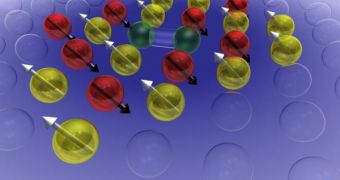For more than two decades, Hubbard's Model has been the standard in predicting and calculating the behavior of high-temperature superconductors in the field of physics. Experts at the University of British Columbia (UBC) have recently demonstrated that, under certain conditions, this model fails. The study could open up new avenues of research for solving the enigma of high-temperature superconductors. It may also be necessary to create an entirely new theoretical approach to explaining the behavior of cuprate materials, one of the outstanding mysteries in condensed-matter physics.
“Single-band Hubbard physics has been used for 20 years to predict how superconducting cuprate materials accommodate the 'holes' left by electron removal. But now it looks like the approaches that underpin a large fraction of the theoretical work in the field just don't work across all the ranges of superconductivity we can study,” the lead author of the new study, Darren Peets, explains.
“The part of the cuprates' superconducting phase diagram we looked at could exhibit less-bizarre behavior, or we could be seeing completely new physics, but in either case the usual theoretical approaches do not work here,” he adds. The researcher conducted the investigation with a doctoral student at UBC. His theory is published in the August 19th issue of the respected scientific journal Physical Review Letters.
The thing about cuprates is that they are insulators in their natural state. However, when “doped,” as in when they have their electrons removed, they become superconductors. The optimum result is obtained, physicists hold, when a material is perfectly doped, as in it becomes superconductor at the highest, most accessible temperature. In the new research, the Hubbard model was exceeded by over-doping a crystal cuprate superconductor, way beyond its optimal level. Peets discovered that, when the optimal level was breached and more electrons were removed, the Hubbard Model couldn't account for the behavior of the remaining electrons.
“By probing the electronic states using tunable-energy X-rays, we were able to show that this region accommodates electron holes in a fundamentally different manner, and that the interactions among the holes already in the material change completely,” the expert says. “Few materials exist in this doping range, and they tend to be very difficult to grow crystals of. In the case of these crystals, thallium oxide – which is toxic – boils off near growth temperatures if you allow it. So a fair bit of work and care is required.”
Peets, currently a post-doctoral researcher at the Kyoto University, conducted the research at the Berkeley Advanced Light Source synchrotron under the supervision of UBC Physics and Astronomy Professor Douglas Bonn, and with UBC chemist and physicist Professor George Sawatzky. The work was supported by the Natural Sciences and Engineering Research Council of Canada, the Canada Research Chairs program, the British Columbia Synchrotron Institute, and the Canadian Institute for Advanced Research.

 14 DAY TRIAL //
14 DAY TRIAL //